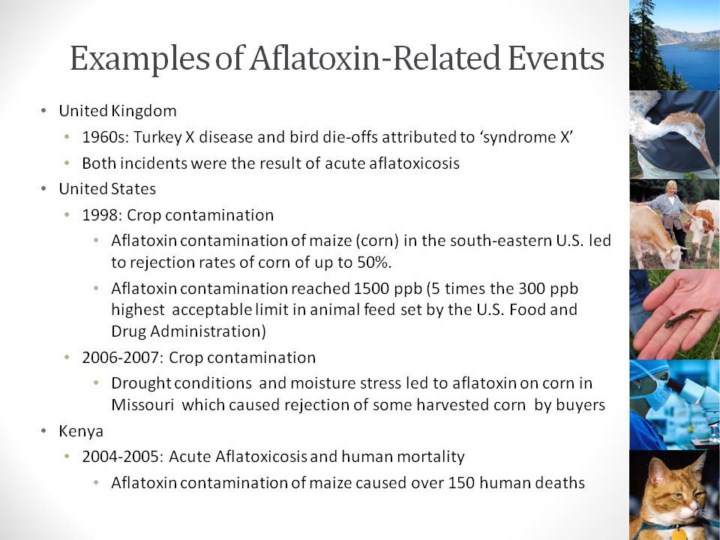| front |1 |2 |3 |4 |5 |6 |7 |8 |9 |10 |11 |12 |13 |14 |15 |16 |17 |18 |19 |20 |21 |22 |23 |24 |25 |26 |27 |28 |29 |30 |31 |review |
 |
Aflatoxin exposure is recognized as a global health problem for animals and humans. It was first identified in poultry in the 1960s, when acute aflatoxicosis caused “turkey X” disease resulting in numerous bird deaths.3 Since then, implications of aflatoxins for human health have been demonstrated numerous times in both field and experimental settings.
Aflatoxin Outbreak in 1998: Corn harvested in 1998 in the southeastern United States, including Texas, Louisiana, Mississippi, Arkansas, Tennessee and Missouri was found to contain high levels of aflatoxin. Concentrations reached as high as 1500 ppb and at one point as much as 30% of corn presented was rejected by buyers.
Aflatoxin Outbreak in 2006-2007: The 2006-2007 growing seasons in Missouri were affected by drought conditions which favored Aspergillus flavus growth and aflatoxin production on; some loads of corn were rejected by buyers.13 These events created increased awareness of the health risks posed by aflatoxins and highlighted the importance of preventing crop contamination in conjunction with improved post-harvesting aflatoxin detection methods. 9
Kenya: 2004-2005 saw outbreaks of acute aflatoxicosis in Kenya resulting from contaminated maize from family farms. The outbreak resulted in hundreds of cases and over 150 deaths.3 |